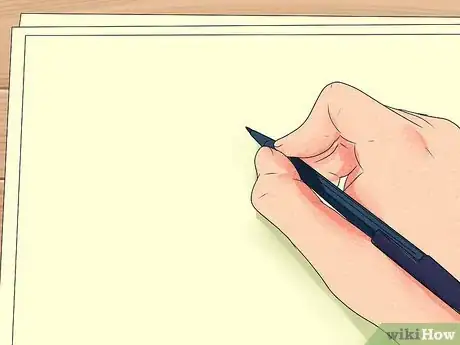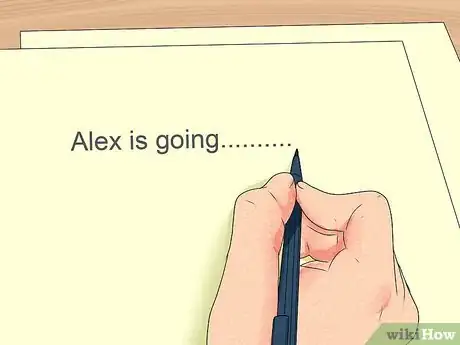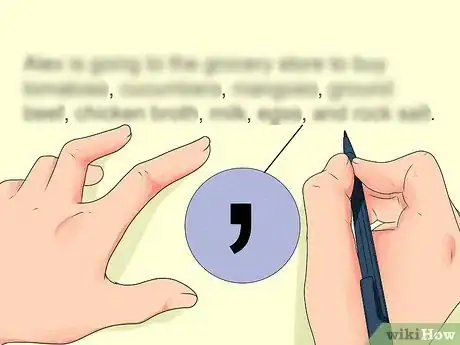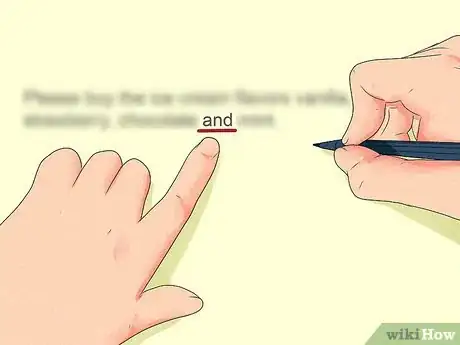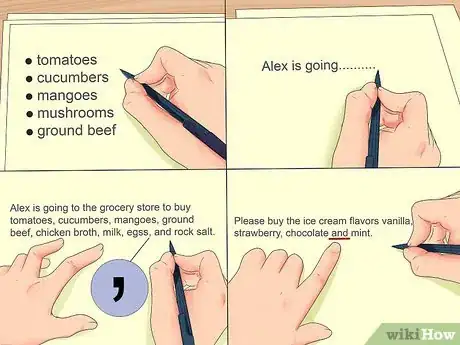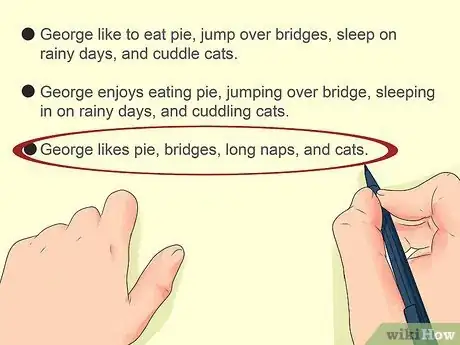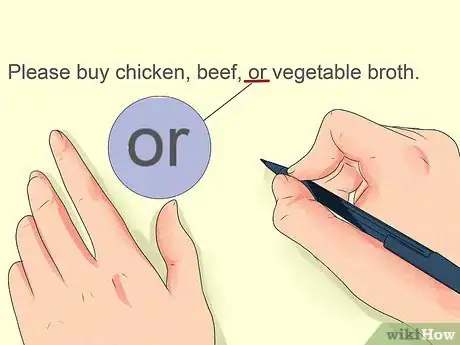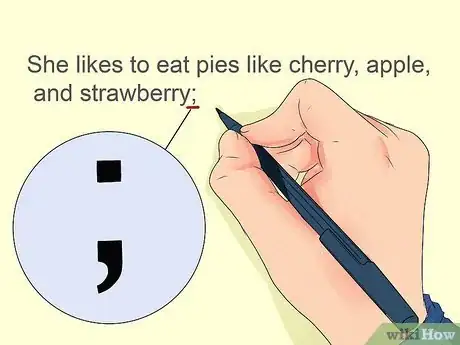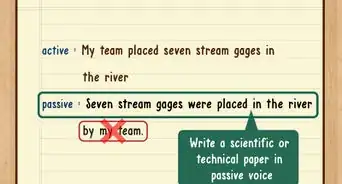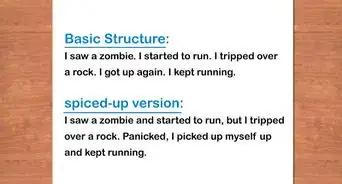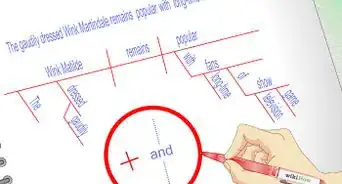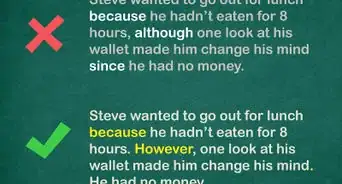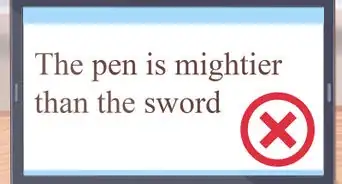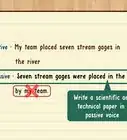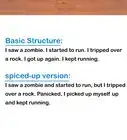X
wikiHow is a “wiki,” similar to Wikipedia, which means that many of our articles are co-written by multiple authors. To create this article, volunteer authors worked to edit and improve it over time.
This article has been viewed 45,006 times.
Learn more...
To make a list into a sentence, you essentially need to add a subject and a verb to bring context to the list. A subject is a noun or pronoun, or a phrase or clause acting as a noun, that does the action. The verb is the action.
Steps
Method 1
Method 1 of 3:
Adding a Subject and Verb
-
1Let’s begin with a simple grocery list. Let’s say you’re sending your sister to the store for groceries. You make out this list:[1]
- tomatoes
- cucumbers
- mangoes
- mushrooms
- ground beef
- chicken broth
- milk
- eggs
- rock salt
-
2Write down the subject and verb. To make that list into a sentence, begin with the person’s name and purpose, which is the subject and verb:[2]
- Alex is going to the grocery store to buy…
- “Alex” is the subject, the person who is doing the action. “Is going” is the verb, what Alex is doing.
Advertisement -
3Add in the list of items. Separate them out with commas. For example:[3]
- Alex is going to the grocery store to buy tomatoes, cucumbers, mangoes, mushrooms, ground beef, chicken broth, milk, eggs, and rock salt.
-
4Note that before the last item in the list, you use “and.” Some grammarians debate whether the comma before the “and” is appropriate; in fact, there is so much debate, it has its own special name, the serial comma or the Oxford comma. On the one hand, some people say it isn’t necessary. Others say it makes sentences clearer. For instance, if you were writing a list about ice cream flavors and you wanted chocolate ice cream and mint-flavored ice cream as two separate flavors, you might write:[4]
- Please buy the ice cream flavors vanilla, strawberry, chocolate, and mint.
- If you leave out the comma before the “and,” it makes it sound like you want a single flavor, chocolate and mint ice cream. For that reason, it is more common to put the comma before the “and” in a series than to leave it out.
Advertisement
Method 2
Method 2 of 3:
Practicing Parallelism
-
1Make sure your list is parallel in structure. Parallel just means that you use the same types of words or phrases throughout your list. For instance, in the list above, all the items were nouns, so the list was parallel.[5]
-
2Choose a type of sentence to make your list parallel. Take a look at this list of things George likes to do: pie, jumping over bridges, to sleep in on rainy days, and to cuddle cats. These structures are not parallel, as you have, in order, a noun, a gerund, and two infinitive phrases. Choose one type to make your sentence. For instance, the sentence could be:[6]
- George likes to eat pie, jump over bridges, sleep in on rainy days, and cuddle cats.
- In this case, each one is an infinitive, built from the original “to.”
- Or it could be: George enjoys eating pie, jumping over bridges, sleeping in on rainy days, and cuddling cats.
- In this one, each one is a gerund.
- Or it could be: George likes pie, bridges, long naps, and cats.
- Here, we’ve changed every item in the list to nouns.
- George likes to eat pie, jump over bridges, sleep in on rainy days, and cuddle cats.
Advertisement
Method 3
Method 3 of 3:
Trying Variations
-
1Use “or” to offer alternatives, rather than including everything in the list. For instance, if Alex was supposed to buy chicken broth but could also buy beef or vegetable broth instead, the you could write it this way as a sentence:[7]
- Please buy chicken, beef, or vegetable broth. This sentence indicates that any of these alternatives is okay.
- Use “etc.,” “including,” “such as,” or “and so on.” to show the list is not inclusive. For instance, in the example of the grocery list, maybe the list maker wants to tell Alex to buy salad ingredients but doesn’t need to specify exactly which ones:
- Buy the ingredients for salad, such as lettuce, tomatoes, and dressing.
- Alternatively, it could be: Buy lettuce, tomatoes, mushrooms, and so on to make a salad.
- Or: Buy lettuce, tomatoes, mushrooms, etc. to make a salad
- Or: Buy ingredients for salad, including lettuce, tomatoes, and dressing.
- Use a colon before the list if the text before it is a complete sentence. For example, you could write:
- Please buy the following ingredients: lettuce, tomatoes, and dressing.
-
2Format a list with semi-colons if commas would be confusing. For example, you could write:[8]
- She likes to eat pies like cherry, apple, and strawberry; to buy ice cream flavors like rocky road, vanilla, and cheesecake; and to make cookies like chocolate chip, snickerdoodle, and molasses.
- Because the items in the list have their own commas, they are actually separate lists all their own. That is, “pies like cherry, apple, and strawberry” is its own list. Therefore, it’s confusing to have a comma after it, as the reader may not be clear where that list ends and the bigger list begins. In this instance, and others like it, using semi-colons is more appropriate.
Advertisement
References
- ↑ https://writingcenter.unc.edu/tips-and-tools/semi-colons-colons-and-dashes/
- ↑ https://writingcenter.unc.edu/tips-and-tools/semi-colons-colons-and-dashes/
- ↑ https://lib.conestogac.on.ca/writing-details/lists-of-items-within-a-Sentence
- ↑ https://writingcenter.unc.edu/tips-and-tools/semi-colons-colons-and-dashes/
- ↑ https://owl.purdue.edu/owl/general_writing/mechanics/parallel_structure.html
- ↑ https://owl.purdue.edu/owl/general_writing/mechanics/parallel_structure.html
- ↑ https://www.grammarly.com/blog/comma-before-or/
- ↑ https://writing.wisc.edu/handbook/grammarpunct/semicolons/
About This Article
Advertisement
